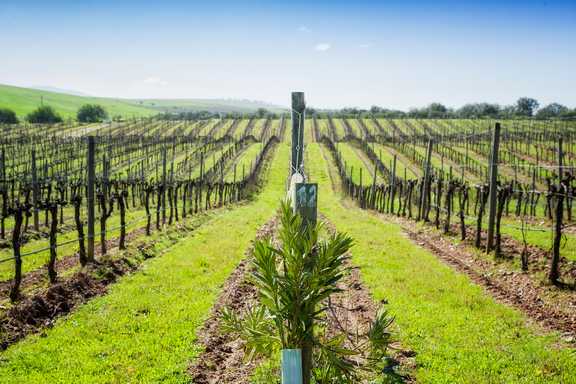This week, I had a chance to check out the Alentejo wine region in Portugal. It’s one of the biggest wine-producing areas in the country, known for its indigenous wines and scenic landscapes. Master Sommelier Evan Goldstein led us through a session explaining the region and tasting the wines.
Located in the southern part of Portugal, Alentejo covers about one-third of the country. The region is characterized by vast plains, hills, and a Mediterranean climate, creating favorable conditions for grape cultivation. Portugal is the fourth-largest wine region in Europe and the eighth-largest wine region in the world.
Evan talked about the “six A’s of Alentejo” as a broad overview:
- Alicante Bouschet — the pride of Alentejo and the region’s flagship red.
- Antão Vaz — an indigenous and delicious white grape variety from Alentejo.
- The classic red blends of Alentejo — winemakers have almost 250 varieties to work with, so they are known for their playful take on blending skills.
- Amphora/talha (as referred to in Alentejo) winemaking — aside from the Republic of Georgia, Alentejo is the only region with a continued tradition of amphora winemaking dating back over 2,000 years.
- Activism — Wines of Alentejo’s internationally recognized Sustainability Program (WASP) have established the region among the world’s most progressive where sustainable winemaking is concerned.
- Altitude — wines from Portalegre in the northernmost part of Alentejo, as well as the higher elevations of Vidigueira to the south.
The Story Behind the Story of Wines
The first two “A’s” focus on specific indigenous grapes that come from the region. Alicante Bouschet is one of the signature red grape varieties in Alentejo. What sets it apart is its deep color and ability to produce wines with rich, velvety textures. The grape has dark skin and pulp, adding intensity and complexity, but is delicious on its own.
The second one is Antão Vaz, a white grape variety known for its thick-skinned berries. Wines made from Antão Vaz are aromatic, featuring citrus and tropical fruit notes with a crisp acidity. Commonly used as a single varietal, it is also blended with other white grapes. The grape’s adaptability in a warm, dry climate and ability to express terroir make it an easy-drinking white with great minerality.
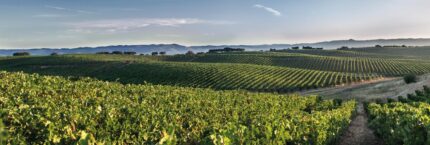
The third thing to note is the blends that come from the region. Because the winemaker has so many diverse indigenous and international grape varieties as well as microclimates and soils to choose from, the wines can be very diverse. Top Alentejo Reds include Alfrocheiro, Alicante Bouschet, Castelão, Touriga Nacional and Trincadeira. Top whites include Antão Vaz, Arinto, Fernão Pires, Roupeiro and Verdelho. You may see reference to the entire region Alentejo or a sub-region, which is about one-fifth of the area with eight sub-regions each with its own unique terroir and grape varieties: Portalegre, Borba, Évora, Redondo, Reguengos, Granja-Amareleja, Vidigueira and Moura. The winemaker’s choice of the entire region or sub-region is reflected on the bottle.
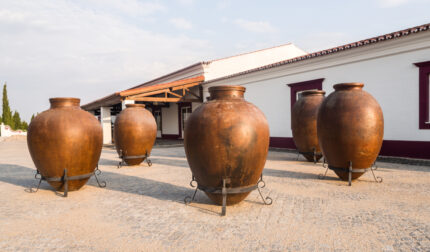
Amphora/Talha
The first Portuguese wines exported to Rome might have come from this region. The Alentejo is the only area in Portugal where some winemakers still practice the oldest wine technique of fermenting and storing wine in clay pots above ground. These Talhas or amphoras hold up to 520 gallons of wine.
Activism around Sustainability
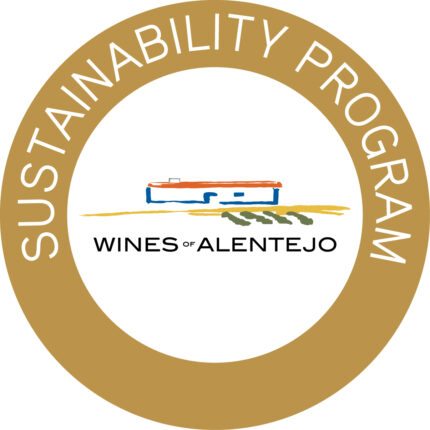
Alentejo is dedicated to environmental sustainability, but its dry climate faces a threat from global warming. With minimal rainfall, sustainable farming is crucial to combat the effects. Measures include creating nature protection areas, promoting biodiversity, and conserving water. Four wineries, including Herdade dos Grous and Casa Relvas, have received the official Wines of Alentejo Sustainability Program (WASP) certification, highlighting their commitment to a balanced blend of traditional and modern winemaking practices. Currently the WASP organization is in a partnership with the World Wildlife Foundation, and they are revamping the 171 criteria to be more effective and inclusive. The end goal is for wineries to adapt verses mitigate climate change emphasizing a circular economy.
In addition, Alentejo is home to about one-third of the world’s cork tree forests. Cork oak trees aid in carbon capture through sustainable bark harvesting. As the trees regenerate their bark, carbon is sequestered in the durable cork. With a lifespan of over 200 years, these trees offer long-term carbon storage.
Altitude
The diversity of soils in the region adds to the complexity of the wines. You’ll find clay, limestone, quartz, granite, sandstone, and schist. The climate is hot and dry with temperature variations from day to night. The landscape varies between plains and hills all giving the wines a rightful sense of place.
Other Fun Facts
Alentejo’s capital, Évora is a UNESCO World Heritage Site, and has been named as one of the happiest places on earth for travel due to the cost of living, sunshine, walking places, friendly locals, and life expectancy. It’s a 90-minute drive from the Portuguese capital of Lisbon. It’s quickly setting new tourism records as people uncover and explore all there is to do in the region.
“Alentejo” means “Beyond (além) the Tagus (Tejo) River. The Tejo flows roughly east-west across the middle of the country and the Alentejo lies south of the river. The Alentejo is. about the same size as the Massachusetts.
This is a region that likes its wine. In fact, it has the most wine consumption per capita of 67.5 liters. As a comparison, France is 47.4 and Italy is 44.4 liters. And the food scene is robust as well.
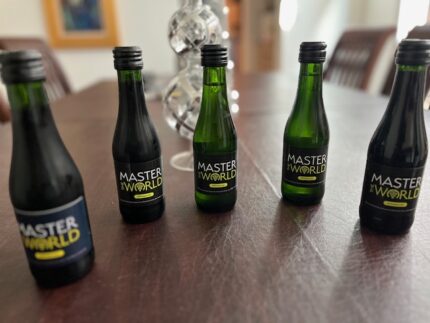
The Wines (please note that I reordered the wines for my story, so they are out of order)
Wine #6- (Alicante Bouschet), 2021 Herdade de Rocim Alicante Bouschet, $23 – Notes of violets, spice, pepper, licorice, vanilla, olive, and berry. Very drinkable but would benefit with age. This is a blend of 40% Touriga Nacional and 30% each of Aragonez and Alicante Bouschet.
Wine #1- (Antão Vaz), 2022 Herdade de Malhadinha Nova Antão Vaz da Malhadinha Branco, $30 – I loved the minerality of this wine. I tasted citrus, jasmine, tropical fruit, and it had a clean finish.
Wine #4- (Alentejano Blend), 2021 Fitapreta Tinto , $27 – This wine is from the Alentejo region and is a blend of Aragonez, Alicante Bouschet, and Trincadeira. I tasted red and black berries, cedar, spice, herbs, and pepper.
Wine #3- (Amphora/ Talha), 2017 Jose Maria da Fonseca Jose de Sousa 2017 Jose Maria da Fonseca Jose de Sousa, $19 – This was a rich wine made from the Alentejano region and a blend of Aragonez, Trincadeira, and Grand Noir. I tasted blackberry, chocolate, tobacco, pine, and oak.
Wine #5- (Activism Around Sustainability), 2018 Alexandre Relvas Herdade de São Miguel Colheita Seleccionada Tinto , $16 — I tasted red and black fruit, balsamic, pepper, eucalyptus, and spice. This is one of the WASP certified wines.
Wine #2- (Altitude), 2021 Quinta da Fonte Souto Branco, $29 – Notes of peach, apricot, citrus, tropical fruit, butterscotch, spice and a touch of flint.
My journey through Portugal’s Alentejo wine region, guided by Master Sommelier Evan Goldstein, uncovered a rich tapestry of tradition and innovation. From flagship grapes like Alicante Bouschet to sustainability activism, the “six A’s of Alentejo” showcased the region’s dedication to diverse blends, ancient winemaking methods, and environmental consciousness. Emphasizing the significance of grapes such as Alicante Bouschet and Antão Vaz, the narrative unfolded with insights into historical winemaking practices and sustainability initiatives like the Wines of Alentejo Sustainability Program. The wine tasting experience featured standout selections, each capturing a unique aspect of Alentejo’s terroir and winemaking heritage.
